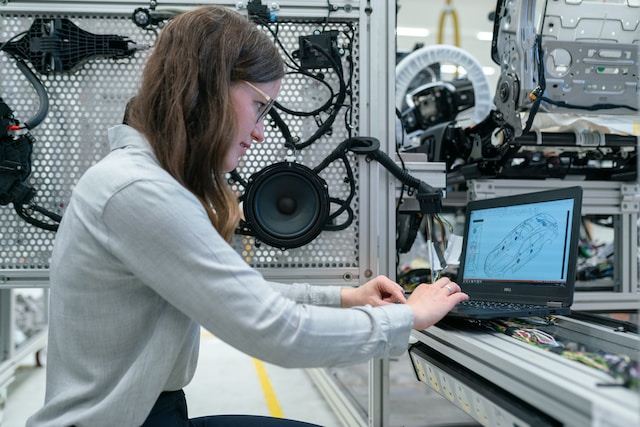In the realm of modern technology, there are two disciplines that, despite their nuanced differences, often get conflated: robotics and mechatronics. Both realms have influenced our lives and industries in transformative ways, yet they maintain distinct identities. The objective of this article is to unpack these differences, starting with a definition of each field, examining their distinguishing characteristics, and shedding light on how they intersect.
What is Robotics?
In essence, robotics is an interdisciplinary branch of engineering and science that deals with the design, construction, operation, and application of robots. The term ‘robot’ originates from the Czech word ‘robota’, which translates to ‘forced labor’. This is a nod to the primary function of robots: to perform laborious or repetitive tasks, often in environments that pose significant threats to human safety.
While the core of robotics is built on mechanical engineering, it also integrates aspects from other fields like computer science and electrical engineering. This discipline encapsulates autonomous systems, artificial intelligence, machine learning, control systems, and kinematics.
Also read: Green Innovation: The Impact and Application of Robotics in the Agriculture Sector
The Essence of Mechatronics
Mechatronics, conversely, is an amalgamation of mechanical engineering, electronics, computer science, and control engineering. The term ‘mechatronics’ is derived from a combination of ‘mechanics’ and ‘electronics’. The primary goal of mechatronics is the creation and control of advanced, integrated systems to create simpler, more reliable, and versatile mechanisms.
Mechatronics merges mechanics and electronics to create intelligent systems, resulting in automation and machinery that go beyond basic mechanical functions. This field can be seen in everyday objects such as washing machines to more complex systems like industrial equipment and advanced prosthetics.
Also read: Innovative Applications of ChatGPT in Robotics: Unleashing New Possibilities
Unraveling the Distinctions Between Robotics and Mechatronics
Even though they share common ground, robotics and mechatronics are distinctive fields. One of the crucial differences is their core objectives.
Mechatronics aims to create ‘smart’ systems, merging mechanical components with electronics and computer control systems to form a cohesive unit. This discipline aims to design integrated systems that leverage diverse technologies to serve a range of functions.
Robotics, while also multidisciplinary, is primarily about designing, constructing, and operating robots. These programmable, mechanical devices can execute tasks autonomously or semi-autonomously, interacting with the physical world with minimal human intervention.
Another area of divergence is their respective scopes. While mechatronics has broad applications, from consumer products to medical equipment and beyond, robotics is generally focused on the creation and application of autonomous machines for task execution.
Also read: Ways to Use Automation in Your Business: A Detailed Guide
The Intersection of Robotics and Mechatronics
While they remain distinct, robotics and mechatronics have substantial areas of overlap. In fact, it could be argued that robotics is a subfield within the broader landscape of mechatronics. The design and function of robots involves mechanics, electronics, and computer science, all of which are core components of mechatronics.
The creation of a robot involves applying the fundamental principles of mechatronics, and a successful robot is essentially a successful mechatronic system. This synergy enhances the functionality of robots, allowing them to perform intricate tasks with improved efficiency and precision.
Also read:
Wrapping Up
To wrap up, mechatronics and robotics, though sharing foundational principles, stand as unique fields with their own focuses. Robotics is dedicated to the creation of autonomous robots for task execution, while mechatronics is centered around the integration of mechanical engineering, electronics, and computer science to create intelligent, adaptable systems.
Also read: What is STEM Robotics?
Their overlap signifies the symbiotic relationship between these disciplines, highlighting how they enrich each other, thereby pushing the boundaries of technological innovations in various applications. By understanding their unique features and their points of intersection, we can fully appreciate the immense potential these fields hold, both individually and together.

